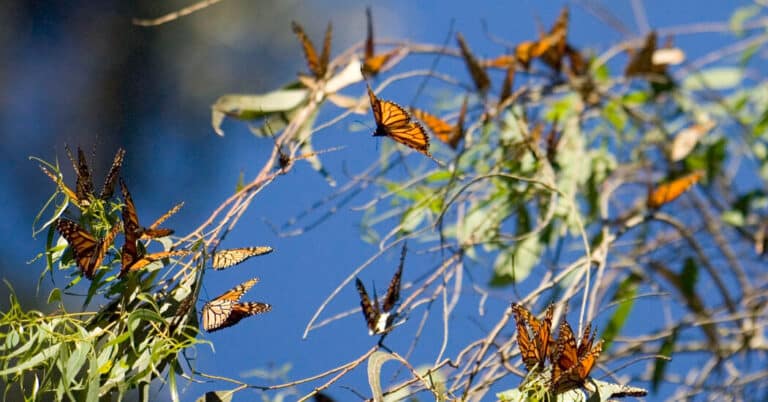There are roughly 400 sites in California where monarchs spend the winter, scattered from southern Mendocino County to the border with Mexico, but especially on the Central Coast. I found myself entranced by these mystical creatures last month at a eucalyptus grove in Pismo Beach, one of the state’s biggest butterfly sites. Currently, more than 10,000 monarchs are there.
That may seem like a lot, but monarchs are in serious decline and were classified as endangered last year. Western monarchs migrating to California, a population that once numbered in the millions, have dropped by 95 percent since the 1980s, according to Emma Pelton, senior conservation biologist with the Xerces Society for Invertebrate Conservation, a nonprofit group based in Portland, Ore.
A particularly precipitous decline began in the winter of 2018, when about 30,000 monarch butterflies wintered in California, she said. Two years later, only 2,000 were counted statewide, and some of the groves that usually attract the most monarchs were devoid of them.
“In 2020, the bottom fell out,” Pelton told me, adding that the moment prompted many “existential conversations in the monarch world” about whether the species would ever recover. But in what Pelton called a “somewhat miraculous” turnaround, their numbers bounced back to around 200,000 in 2021 and 2022.
There’s a lot we don’t understand about monarchs, so it’s difficult to pinpoint why their numbers have fluctuated so drastically in recent years, but environmental factors like changes in temperature and precipitation probably played a role. In general, experts believe that habitat loss (because of deforestation for development or other reasons), pesticide use, drought and climate change have all contributed to a long-term decline of the species.


